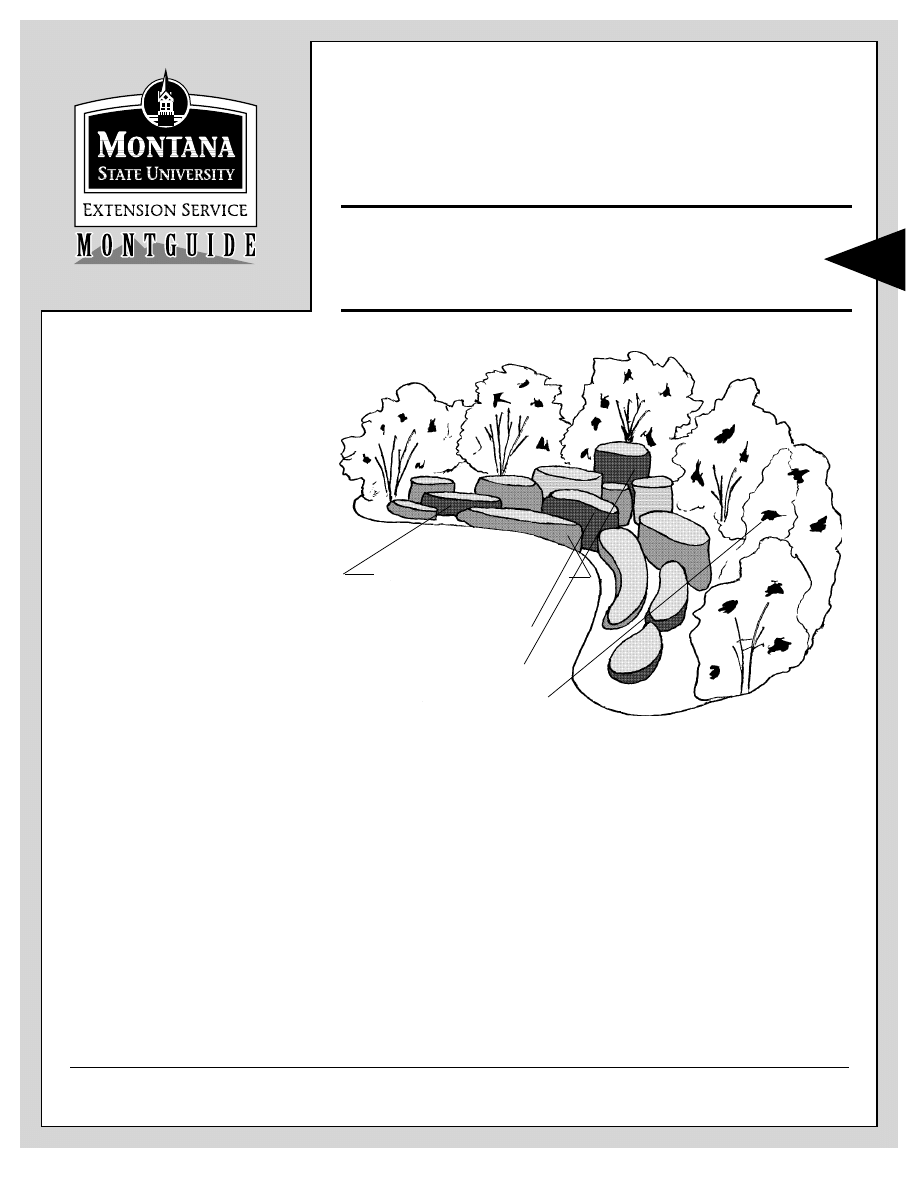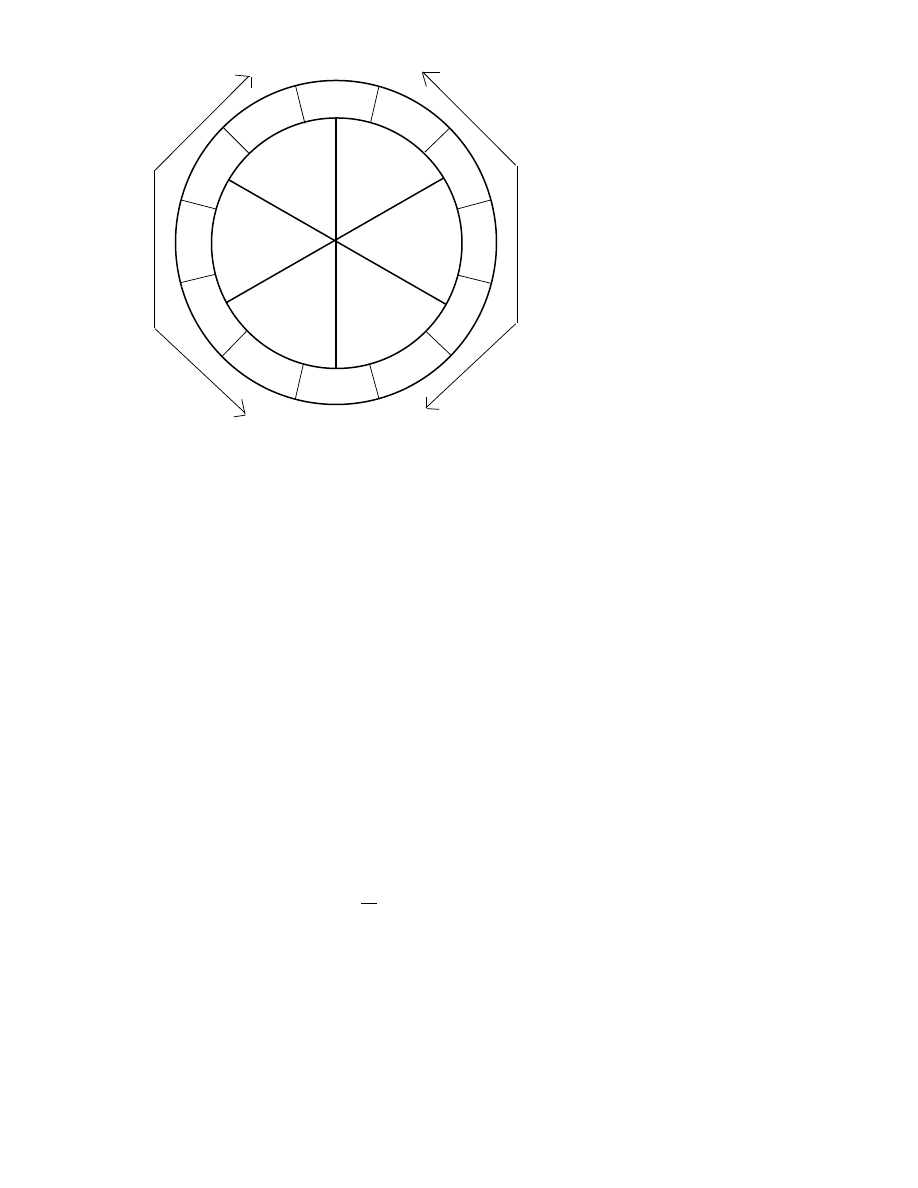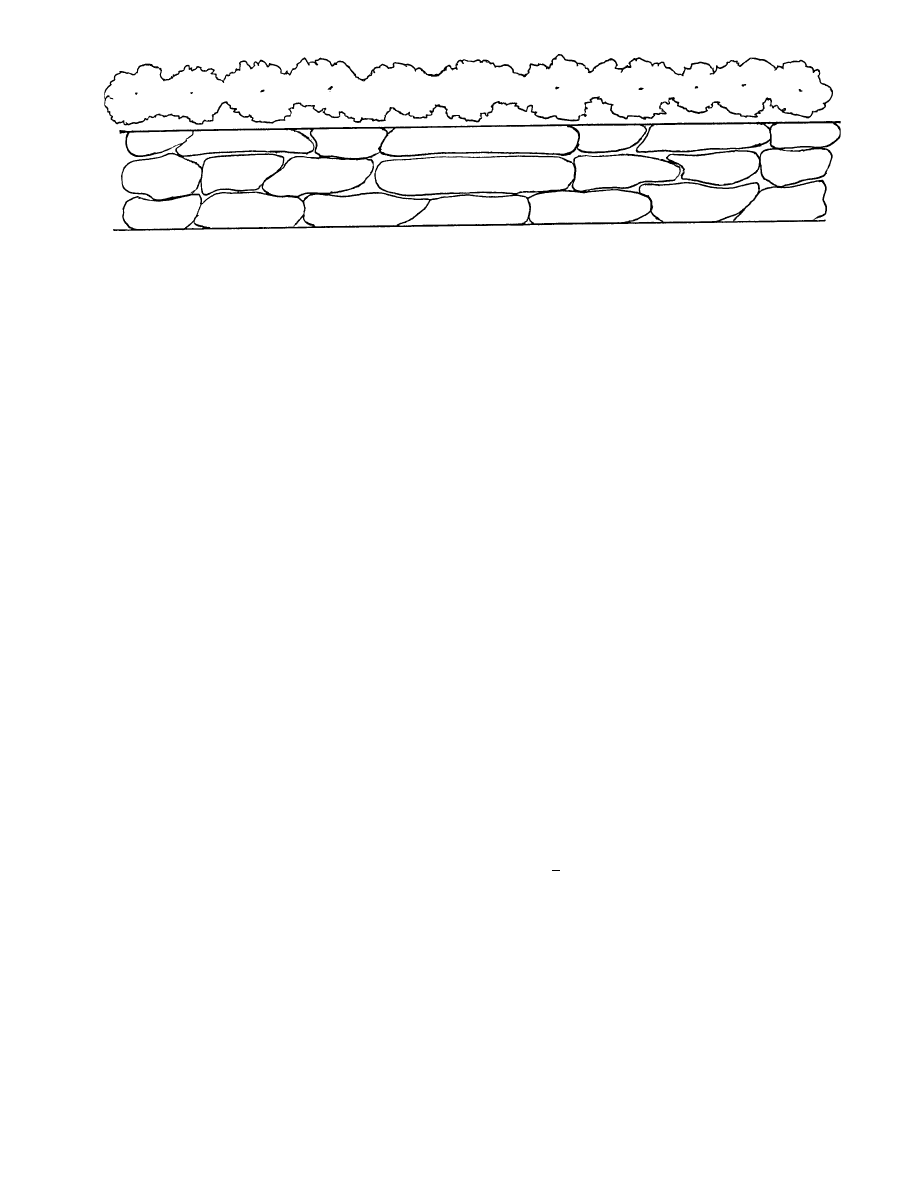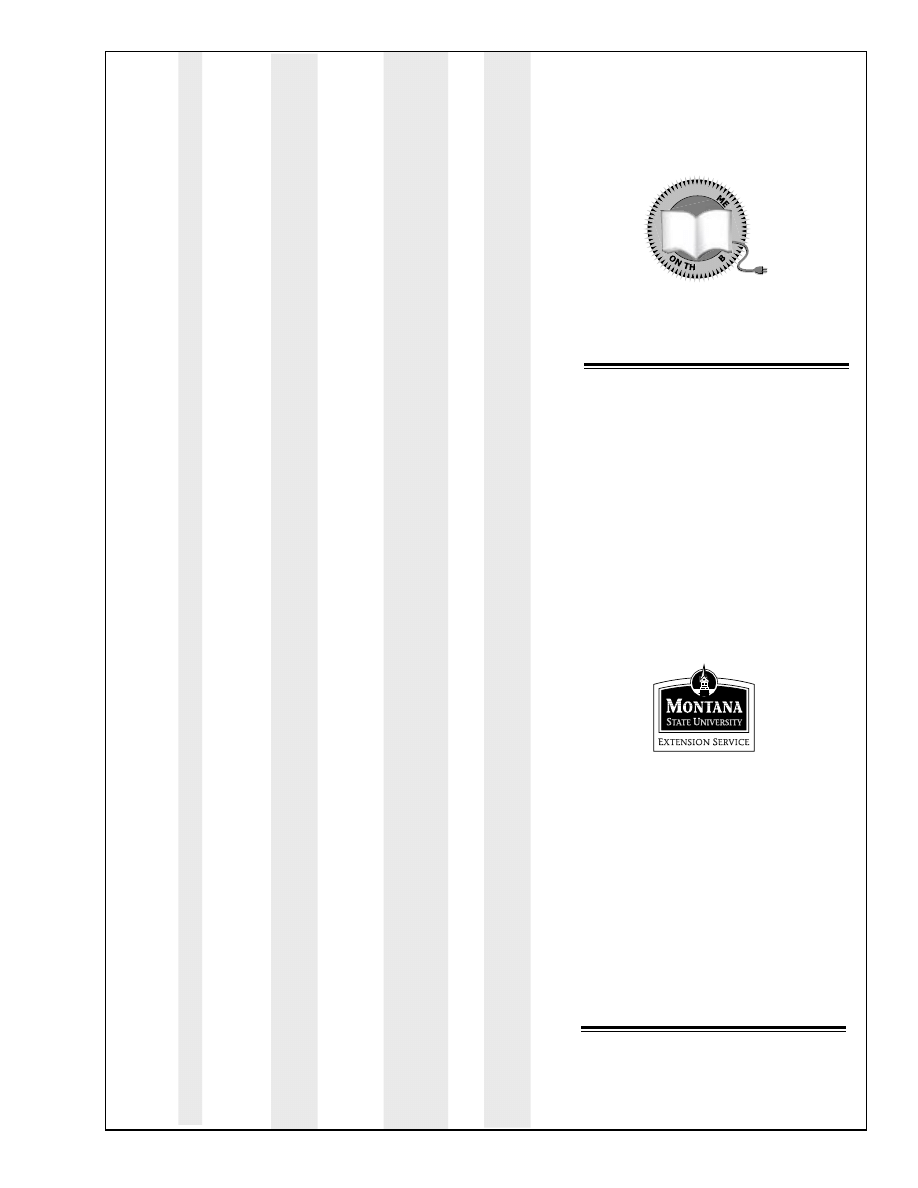
Planning flower gardens, starting plants indoors and caring for
a garden. Includes diagrams and table of ornamental and cultural
characteristics of 73 common flowers.
MT199501AG reviewed 10/04
Growing Annual Flowers
by G. E. Evans and Robert Gough, Montana State University Extension
horticulture specialists, retired and current, respectively
A
nnual flowers solve many
landscape problems. No
other plants provide such
continuous bloom. They fill voids
in permanent plantings while young
woody plants grow, and provide
inexpensive color and cut flowers in
almost any soil.
Annuals are used in perennial
plant beds to continue interest fol-
lowing early blooming bulbs and
perennials. They can be transplant-
ed or direct-seeded into the spot
where tulip and daffodil blooms
have faded, or planted in front of
woody flowering shrubs to provide
further interest through the season.
If you want plenty of cut flowers,
devote a separate area of the garden
to annuals, but be sure to coordinate
it with the overall landscape plan.
Planning the Flower Border
The annual flower border can be
an attractive element in the overall
landscape if you follow a few sim-
ple guidelines. Curve the bed lines
of an informal planting and plant
masses of individual flowers in
“drifts” which gradually melt into
each other (Figure 1). Formal plant-
ings have angular bed lines. When
annual beds include perennials,
mass the annuals together to sim-
plify management. Graduate plant
heights from front to back, and use
low perennials in front.
Figure 1. Color and size transition. Blocks of each annual planted
in “drifts.”
Low plants (front and sides)
Intermediate size (center)
Tall plants to rear (center)
Backdrop of shrubs or fence
Make the bed at least 3 feet but
no more than 5 feet deep to allow
for working the bed from its border.
If it must be deeper than 5 feet, plan
stepping stones or a small path to
allow access to the interior of the
bed.
To be effective, each flower mass
should be large enough to be clearly
seen from a distance. Use the
“warm” or advancing colors (red,
orange, yellow) in smaller masses
to subordinate them; use “cool” or
receding colors (blue, violet, green)
in larger masses to contrast with the
warm ones. The color wheel (Figure
2) will help you understand color
use. Each cool color opposes a
warm color. Colors across the wheel
from each other are complemen-
tary and provide strong contrast.
Adjacent colors are analogous and
provide subtle color transitions. If
you donʼt want strong accent, donʼt
arrange flowers with warm colors
next to those with cool colors.
A-8

2
Red/V
iolet
Violet
Blue/V
iolet
Blue
Blue/Green
Green
Yellow/Green
Yellow
Yellow/ Orange
Red/Orange
Orange
Complementary
Colors
Complementary
Colors
Complementary
Colors
Analogous Colors
Red
Analogous Colors
Figure 2. Color Wheel
Color creates moods. Warm colors
exhilarate and stimulate while cool
colors relax the viewer. Let cool
colors predominate in areas devoted
to rest and relaxation. Warm colors
command and direct attention to
specific areas in the landscape.
Youʼll find an example of an an-
nual flower border with proper size
and choice of plants in Figure 3. All
flower borders, whether annual or
perennial, are most attractive against
a fence of neutral color or against a
shrub background (Figure 1).
Starting Plants Indoors
Many annuals perform better if
started indoors and transplanted into
the garden. You can determine indoor
planting time by finding the number
of days from seed to flower on the
seed packet. Table 1 includes some
general information about planting
dates for inside or outside sowing.
Many people plant seeds too
early. This results in an oversized,
leggy transplant that is susceptible to
damping-off disease. Legginess is of-
ten caused by low indoor light levels
and/or by too high a temperature. Let
an electric fan blow air across your
plants—the plant movement will help
form stocky plants. You must coordi-
nate the date of sowing with the aver-
age date of last frost in your location.
For much of western Montana, seed
about April 1 since the date of last
frost is often close to June 1. March
15 may be a better date in much of
eastern Montana. The right time to
start seedlings also depend upon the
species. Trial and error is the only
way to determine a more precise time
for your specific location and flower
species.
Use a mix containing 50 percent
loam soil, 25 percent peat moss,
and 25 percent washed sand to start
your seeds indoors. Or, you can use
a soiless potting mix containing peat
moss and perlite. If you use the soil
mix be sure to sterilize it to reduce
the chances of the seedlings damp-
ing-off. Place moist soil into shallow
trays and put these into a household
oven at 180°F for 30 minutes. Use a
probe-type thermometer to determine
when all soil has reached the desired
temperature. You can also use mi-
crowave ovens to sterilize soil. De-
termine the amount of time required
by monitoring soil temperatures as
described above for the regular oven.
Soiless mixes usually need no steril-
ization.
Screen the soil or mix to a fine
texture, fill pots or trays, and firm
and moisten it before planting. Scat-
ter small seeds over the surface
and cover them with mix to a depth
equivalent to twice their largest
diameter. Label the seeded flats to
maintain plant identity. Cover seeded
containers with a plastic sheet to
maintain relatively high humidity,
and with newspaper to shade the
media surface unless the seed trays
are kept out of direct sun. Most seeds
germinate well at temperatures be-
tween 50° and 80°F. Spider flower
(Cleome) and petunia germinate
better at warm temperatures (70°-
80°F). Seeds of species that prefer
cooler temperatures include African
daisy (Arctotis), candy tuft (Iberis),
bachelor button (Centaurea), clarkia
(Clarkia), godetia (Clarkia sp.), and
larkspur (Delphinium). Remove the
newspaper after the seeds germinate.
Water the seeded flats or pots with
great care by placing the containers
in shallow trays of water and allow-
ing water to move up through the
mix. Watering from above can dam-
age the fine seeds or small seedlings.
Transplant the seedlings to flats
or individual containers when they
have reached the 2-3 leaf stage. Peat
pots are popular but Styrofoam cups
with holes punched in the bottom
work well also. Place the transplants
in a greenhouse or a hot bed if you
can. A south-facing window with
added “grow” lights will do if other
facilities are not available. Be sure
to harden-off the plants before you
transplant them to the garden by
gradually exposing them to cooler
nights over a 1 to 2 week period.
Setting out the Plants
Most annuals donʼt require very
rich soil but they do need an ad-
equate supply of nutrients. Work into
your bed area a complete fertilizer at
the rate 1/4 pound of actual nitrogen
per 100 square feet. Using 5-10-10
fertilizer, 5 pounds of fertilizer per
100 square feet is the right amount.
Also work in organic matter such as
peat moss or well-decayed manure
to improve soil structure. Most annu-
als grow best at a soil pH of between
6.5 and 7.5. Attention to fertility now
will help produce vigorous, healthy
plants and blooms later on.

3
yellow
yellow
yellow
A
B
C
blue
blue
blue
blue
blue
blue
blue
white
white
white
white
white
white
rose
rose
red
rose
rose
Suggested annuals for the above design
Suggested plants in…
Row/Height Color
Sun
Shade*
A (18”)
Yellow
Marigold, Zinnia
Monkey Flower,
*
China Aster,
*
Cosmos
Blue
Larkspur, Verbena, Scabiosa
Forget–me–not,
*
Lupine,
*
Verbena
White
Nicotiana, Zinnia, Lavender
Balsam, Sweet Sultan
Red
Celosia, Zinnia
*Celosia, *Painted Daisy, *Verbena
B (12”)
Blue
Ageratum, Centaurea, Petunia, Salvia
*
Bellflower,
*
Petunia
White
Stocks, Phlox, Dimorphotheca
*
Wax Begonia
Rose
Phlox, Petunia, Zinnia
*
Wax Begonia
C (8”)
White
Alyssum, Petunia
Lobelia,
*
Dianthus,
*
Alyssum
Rose
Verbena, Moss rose, pansy
*
Dianthus, Impatiens
Blue
Ageratum, Lobelia, Pansy
Pansy,
*
Lobelia,
*
Moss rose
Yellow
Marigold, Pansy
Pansy
*
Adapted to light shade only
.
Figure 3. Color sequences and size considerations in an annual flower border.
Plant outdoors late in the afternoon
on a cloudy day when soil is moist to
help reduce transplant shock. Spacing
depends upon the species. Plant giant
zinnias 18 inches apart, but alyssum
only 6 inches apart.
Annuals that are direct-seeded will
need thinning before they become
crowded. Failure to do this will result
in overcrowding and spindly plants
with few flowers.
Pinching
Some annuals require pinching dur-
ing the thinning or transplanting pro-
cess. Pinching increases the number
of blooms and forms a more stocky
plant. Ageratum, Browallia, Calendu-
la, Chrysanthemum, Petunia, Phlox,
pinks, Salpiglossis, Schizanthus, snap-
dragon, verbena and zinnia all benefit
from having their tips pinched. DO
NOT pinch impatiens, cockscomb,
everlastings, poppies or stocks.
Fall Clean-up
Remove all annual plants after
fall freeze to reduce the chances that
disease organisms will be carried
over into the next season. Till the
soil to remove weeds and leave it in
good condition for spring planting.
If it needs more organic matter, add
it during fall tilling.
Annuals that reseed
Some annual species reseed
themselves. If you want this to hap-
pen, leave the plants in place until
the seeds have shed, then clean up
the spent leaves and stems. Browal-
lia, California poppy, calliopsis,
cornflower, Cosmos, Four-oʼclock,
Gypsophila, rocket larkspur, morn-
ing-glory, Petunia, Pot marigold,
rose moss, Mealycup sage, snow-
on-the-mountain, spider flower,
summer cypress and sweet alyssum
are some species that will reseed in
your garden.
Aftercare
Hoe weeds to keep them from
competing with your flowers for
water and nutrients. A mulch of fine
bark will decrease weed competition,
conserve soil moisture, and lower
high summer soil temperatures for
better plant growth.
Water your plants during warm
dry periods to assure continuous
plant development. Infrequent, deep
waterings are better than light, fre-
quent ones. At least the top 6 inches
of soil should feel moist and cool.
Use drip irrigation during flowering
to prevent browning of the blooms
by water puddling on them.
Remove spent blossoms (“dead-
head”) to force a longer continu-
ous bloom period and fertilize your
plants weekly with water-soluble
fertilizer.
Shrubs

Table 1. Ornamental and cultural characteristics of common annual fl
owers.
Bloom
Planting
How
Plant Name
Uses
Color
Height
Period
Exposur
e
Time
Pr
opagated
Limitations
Remarks
African Daisy
White, orange
Seed or
W
ill not fl
ower well
Ar
ctotis
spp.
General
& steel blue
12”-30”
July
, August
Full sun
After frost
transplants
during hot nights
Has woolly leaves
Ageratum
General,
Lavender blue,
July to
Partial
Ageratum
spp
edging, planters
white, pinkish
3”-10”
September
shade
After frost
Transplants
Prefers warm climate
Alyssum (Sweet)
Borders,
White, purple,
June to
Partial
Seed or trans-
Lobularia maritima
edgings,
pinkish
9”
September
shade
After frost
plants, cuttings
W
idely adapted
W
ill re-seed itself
Baby Blue Eyes
Borders,
Sky blue with
May to
Sunny to
Sow in flats
Seed indoors,
Cut flowers do not
Nemophila menziesii
pot plants
white centers
6”-8”
September
partial shade
in March
plant outdoors
last long
after frost
Bachelor Button (Corn
Blue, rose, white,
Late spring,
Cool nights needed
Flower)
Centaur
ea cyanus
Cut flowers
mauve, purple
12”-18”
early summer
Full sun
Early spring
Seed
for flowering
Often re-seeds itself
Balsam (See Impatiens)
Basket Flower
Cut flowers
Pink, purplish to
Late spring,
Cool nights needed
Centaur
ea americana
and borders
white
24”-60”
early summer
Sunny
Early spring
Seed
for flowering
W
ax Begonia
Bedding plants,
White, Pink,
Partial
Begonia semperflor
ens
planters
Red
12-18”
Continuous
shade
After frost
Transplants
Indoor plant, also
Black-eyed Susan
Golden-yellow
(Annual Coneflower)
petals with dark
Summer
Gloriosa daisies are
Rudbeckia hirta
General
brown centers
24”-36”
and fall
Full sun
Early spring
Seed
Prefers warm climate
tetraploid forms of this.
Browallia
Late summer
Cuttings
Br
owallia
spp.
General
Blue
9”-30”
and fall
Full sun
After frost
or seeds
Prefers warm climate
Several forms available
Calendula (Pot Marigold)
Yellow
, yellowish
July to
Rather dry soil. Does not
Calendula offi
cinalis
General
to orange
18”-36”
autumn
Full sun
Early spring
Seed
like hot humid weather
California Poppy
Yellow
, carmine,
Perpetuates itself by
Eschscholzia californica
General
flame, orange-red
12”-18”
Summer
Full sun
Early spring
Seed
Light, sandy soil
self-sown seeds
Calliopsis (Annual Core-
Yellow
, maroon,
July and
Late
April
Both dwarf and tall
opsis)
Cor
eopsis tinctoria
General
crimson
12”-18”
August
Full sun
or May
Seed
strains available
Candytuft
White, pink, mauve,
Summer
Iberis umbellata
Flower borders
purple, crimson,
10”
to fall
Sunny
Spring
Seed
Needs well-drained soil
Good in cool climates
China
Aster
General, indoor
Lavender
, yellow
18”-30”
Seed or
Thrives in fairly
Callistephus chinensis
decoration
center; rose, pink,
Dwarf
August &
Partial
After frost
transplants
Prefers cool nights
alkaline soils
crimson, white
6”-12”
September
shade
Clarkia
Crimson, white
One species native
Clarkia
spp.
General
to purple
12”-36”
June & July
Sunny
Early May
Seed
Prefers cool nights
in western Montana
Cleome (Spider Flower)
Pink, white, rosy
July and
Immediately
Seeds or
One species grows
Cleome hasslerana
General
purple, golden yellow
36”-72”
August
Sunny
after frost
transplants
Subject to fl
ea beetles
4
Ta
bl
e
1.
O
rn
am
en
ta
l a
nd
c
ul
tu
ra
l c
ha
ra
ct
er
is
tic
s
of
c
om
m
on
a
nn
ua
l f
lo
w
er
s.
Bloom
Planting
How
Plant
Name
Uses
Color
Height
Period
Exposur
e
Time
Pr
opagated
Limitations
Remarks
African Daisy
White, orange
Seed or
W
ill not flower well
Ar
ctotis
spp.
General
& steel blue
12"-30"
July
, August
Full sun
After frost
transplants
during hot nights
Has woolly leaves
Ageratum
General,
Lavender
blue,
July
to
Partial
Ageratum
spp
edging,
pl
an
ter
s
white,
pinkish
3"-10"
September
shade
After
frost
Transplants
Prefers
warm
climate
Alyssum (Sweet)
Borders,
White, purple,
June to
Partial
Seed or trans-
Lobularia
maritima
ed
gi
ng
s,
pinkish
9"
September
shade
After frost
plants, cuttings
W
idely adapted
W
ill re-seed itself
Baby Blue Eyes
Borders,
Sky blue with
May to
Sunny to
Sow in flats
Seed indoors,
Cut flowers do not
Nemophila
menziesii
pot plants
white centers
6"-8"
September
partial shade
in March
plant outdoors
last long
after
frost
Bachelor Button (Corn
Blue, rose, white,
Late spring,
Cool nights needed
Flower)
Centaur
ea
cyanus
Cut
flowers
mauve,
purple
12"-18"
ea
rly
su
m
m
er
Full sun
Early spring
Seed
for flowering
Often re-seeds itself
Balsam (See Impatiens)
Basket
Flower
Cut
flowers
Pink,
purplish
to
Late
spring,
Cool
nights
needed
Centaur
ea
americana
and
borders
white
24"-60"
ea
rly
su
m
m
er
Sunny
Early
spring
Seed
for
flowering
W
ax Begonia
Bedding plants,
White, Pink,
Partial
Begonia
semperflor
ens
planters
Red
12-18"
Continuous
shade
After frost
Transplants
Indoor plant, also
Black-eyed
Susan
Golden-yellow
(Annual Coneflower)
petals with dark
Summer
Gloriosa daisies are
Rudbeckia
hirta
General
brown centers
24"-36"
and fall
Full sun
Early spring
Seed
Prefers warm climate
tetraploid forms of this.
Browallia
La
te
su
m
m
er
Cuttings
Br
owallia
spp.
General
Blue
9"-30"
and fall
Full sun
After frost
or seeds
Prefers warm climate
Several forms available
Ca
le
nd
ul
a (
Po
t M
ar
ig
ol
d)
Yellow
, yellowish
July to
Ra
th
er
d
ry
so
il.
D
oe
s n
ot
Calendula
officinalis
General
to orange
18"-36"
autumn
Full sun
Early spring
Seed
like hot humid weather
California
Poppy
Yellow
, carmine,
Perpetuates
itself
by
Eschscholzia
californica
General
flame, orange-red
12"-18"
Summer
Full sun
Early spring
Seed
Light, sandy soil
self-sown seeds
Calliopsis (Annual Core-
Yellow
, maroon,
July and
Late
April
Both dwarf and tall
opsis)
Cor
eopsis tinctoria
General
crimson
12"-18"
August
Full sun
or May
Seed
strains available
Candytuft
W
hi
te
, p
in
k,
mauve,
Summer
Iberis
umbellata
Flower
borders
purple,
cr
im
so
n,
10
"
to
fall
Sunny
Spring
Seed
Needs well-drained soil
Good in cool climates
China
Aster
General,
indoor
La
ve
nd
er
, y
el
lo
w
18"-30"
Seed or
Thrives in fairly
Callistephus
chinensis
decoration
center; rose, pink,
Dwarf
August &
Partial
After frost
transplants
Prefers cool nights
alkaline soils
crimson,
white
6"-12"
September
shade
Clarkia
Crimson,
white
One
species
native
Clarkia
spp.
General
to purple
12"-36"
June & July
Sunny
Early May
Seed
Prefers cool nights
in
w
es
te
rn
M
on
tana
Cleome (Spider Flower)
Pink, white, rosy
July and
Im
m
ed
ia
te
ly
Seeds or
One species grows
Cleome
hasslerana
General
pu
rp
le,
go
ld
en
ye
llo
w
36"-72"
August
Sunny
after frost
transplants
Subject to flea beetles
wild

Bloom
Planting
How
Plant Name
Uses
Color
Height
Period
Exposur
e
Time
Pr
opagated
Limitations
Remarks
Cockscomb
General
Summer
Seed or
Cockscomb requires
Plumrose forms best
Celosia cristata
winter bouquets
Crimson, red, rose
12”-36”
and autumn
Sunny
Spring
transplants
warm climate
in mountain valleys
Corn Flower (See Bachelor Button)
Cosmos
Cosmos bipinna-
General, table
White, pink, yellow
,
Summer and
Protect from high winds.
tus &Cosmos sulphur
eus
decorations
crimson, magenta
30”-48”
early fall
Sunny
After frost
Transplants
Do not over
-fertilize with nitrogen
Dahlia
Summer
Sunny; but
Start inside,
Tubers, cuttings,
Annual forms may
Dahlia hybrids
General
All except blue
Variable
and fall
will tolerate
transplant
transplants
Needs well-drained soil
be grown from
semi-shade
after frost
seed
Delphinium (Annual Larkspur)
Blue, rose, pink,
July &
Adequate moisture,
Tolerates
Cr
onsolida ambigua
General
mauve, white
12”-36”
August
Sunny
April
Seeds
fertile soil
alkaline conditions
For
get-me-not
Edgings,
Late spring,
Partial
Myosotis sylvatica
ground cover
Blue
8”-18”
early summer
shade
After frost
Transplants
Not drought resistant
W
ill self-sow
Four OʼClock
Mid-summer
Shade
Tubers
Marabilis jalapa
Borders
White, red, yellow
3 feet
to frost
tolerant
After frost
and seed
Very tender
Foxglove
General
Partial
Seed or
Biennial or
Digitalis purpur
ea
(Medicine)
Purple, white
5 feet
June & July
shade
transplants
perennial
Gaillardia (Blanket fl
ower)
Cut flowers,
Yellow
, reddish grays,
Seed or
Self-seeds, Gaillar
dia
spp. and hybrids
borders
purple centers
24”
July to frost
Full sun
Spring
transplants
W
ell-drained soil
perennial types
Geranium
Bedding plants,
Red, pink, salmon,
Mid to
Cuttings,
Ivy types for
(Pelar
gonium hortorum
)
planters
white
12-18”
late summer
Full sun
After frost
transplants
hanging baskets
Gilia
Gilia micrantha
White, light blue,
Many species in
and
Gilia tricolor
Borders
purple, mauve
15”-24”
Mid-summer
Sunny
April
Seed
western N.
America,
some annual.
Gladiolus
Late summer
,
Best as a specialty
Store corms in
Gladiolus hybridus
Cutting
Numerous
15”-45”
fall
Sunny
Early spring
Corms
flower
cool, moist place
Globe-Amaranthus
General,
Reddish, purple,
Early spring
Transplants and
Gomphr
ena globosa
drying
crimson, white
12”-24”
Summer
, fall
Sunny
or summer
direct seeding
Godetia
Borders, general
Red-white,
Late spring
Seed or
trans-
Clarkia amoena
Cut flowers
lilac, purple
12”
& summer
Sunny
April
plants.
Difficult
Cool nights, dry climate
Sandy soil
to transplant.
Helianthus (Sunflower)
Yellow rays, brown
Rather coarse for small
Helianthus
spp. & hybrids
Background
centers; orange
12ʼ-15ʼ
Mid-
summer
Sunny
Early spring
Seed
properties unless dwarf
Great diversity
chestnut-red
until frost
forms grown
of form
5
Bloom
Planting
How
Plant
Name
Uses
Color
Height
Period
Exposur
e
Time
Pr
opagated
Limitations
Remarks
Cockscomb
General
Summer
Seed or
Cockscomb requires
Pl
um
ro
se
fo
rm
s b
es
t
Celosia
cristata
w
in
te
r b
ou
qu
et
s
Crimson, red, rose
12"-36"
and autumn
Sunny
Spring
transplants
warm climate
in mountain valleys
Corn Flower (See Bachelor Button)
Cosmos
Cosmos bipinna-
General,
table
W
hi
te
, p
in
k,
y
el
lo
w
,
Summer and
Protect from high winds.
tus
&Cosmos
sulphur
eus
decorations
crimson, magenta
30"-48"
early fall
Sunny
After frost
Transplants
D
o
no
t o
ve
r-f
er
til
iz
e with nitrogen
Dahlia
Summer
Sunny;
but
Start
inside,
Tu
be
rs
, c
ut
tin
gs
,
Annual
forms
may
Dahlia
hybrids
General
All
except
blue
Va
ria
bl
e
and fall
w
ill
to
le
ra
te
transplant
transplants
Needs well-drained soil
be grown from
semi-shade
after
frost
seed
Delphinium (Annual Larkspur)
Blue, rose, pink,
July &
Adequate moisture,
Tolerates
Cr
onsolida
ambigua
General
mauve, white
12"-36"
August
Sunny
April
Seeds
fertile soil
alkaline conditions
For
get-me-not
Edgings,
Late
spring,
Partial
Myosotis
sylvatica
ground
cover
Blue
8"-18"
ea
rly
su
m
m
er
sha
de
After frost
Transplants
Not drought resistant
W
ill self-sow
Four
OʼClock
Mid-summer
Shade
Tubers
Marabilis
jalapa
Borders
White, red, yellow
3 feet
to frost
tolerant
After frost
and seed
Very tender
Foxglove
General
Partial
Seed
or
Biennial
or
Digitalis
purpur
ea
(Medicine)
Purple, white
5 feet
June & July
shade
transplants
perennial
Ga
ill
ar
di
a (
Bl
an
ke
t f
lo
we
r)
Cut
flowers,
Ye
llo
w,
re
dd
ish
gr
ay
s,
Seed
or
Self-seeds,
G
ai
lla
rd
ia
sp
p.
an
d h
yb
rid
s
borders
purple centers
24"
July to frost
Full sun
Spring
transplants
W
ell-drained soil
perennial types
Geranium
Bedding plants,
Red, pink, salmon,
Mid to
Cuttings,
Ivy types for
(Pelar
gonium
hor
torum
)
planters
white
12-18"
late
summer
Full
sun
After
frost
transplants
hanging
baskets
Gilia
Gilia
micrantha
White,
light
blue,
Many
species
in
and
Gilia
tricolor
Borders
purple,
mauve
15"-24"
Mid-summer
Sunny
April
Seed
western
N.
America,
some
annual.
Gladiolus
La
te
su
m
m
er
,
Best as a specialty
Store corms in
Gladiolus hybridus
Cutting
Numerous
15"-45"
fall
Sunny
Early spring
Corms
flower
cool, moist place
Globe-Amaranthus
General,
Reddish,
purple,
Early
spring
Transplants
and
Gomphr
ena globosa
drying
crimson,
white
12"-24"
Summer
, fall
Sunny
or
summer
direct
seeding
Godetia
Borders, general
Red-white,
Late spring
Seed or
trans-
Clarkia
amoena
Cut flowers
lilac, purple
12"
& summer
Sunny
April
plants. Dif
ficult
Cool nights, dry climate
Sandy soil
to transplant.
Helianthus (Sunflower)
Yellow rays, brown
Rather coarse for small
H
eli
an
th
us
sp
p.
&
hy
br
id
s
Background
centers; orange
12'-15'
Mid-
summer
Sunny
Early spring
Seed
properties unless dwarf
Great diversity
chestnut-red
until
frost
forms
grown
of
form
Impatiens
General
White, yellow
, red,
Spring to
Partial
Cuttings,
Sandy
, moist, rich
Impatiens
balsamina
(house plant)
pink
18"
late fall
shade
May
transplants
Not drought resistant
soil

Bloom
Planting
How
Plant Name
Uses
Color
Height
Period
Exposur
e
Time
Pr
opagated
Limitations
Remarks
Josephs Coat (
Amaranthus)
Mixed-carmine red,
May or
Some types
are weeds.
Grown for foliage
(T
ricolor tassle fl
ower)
Novelty
yellow
, dark green
12”-48”
Mid-
summer
Sunny
early June
Transplants
Needs warm weather
.
color
(maroon, scarlet leaves)
Kochia
Summer flower
green in summer
,
30”
Late summer &
Valued for its leaf
beds
purplish bronze in fall
fall (flowers
Full sun
May
Transplants
Do not allow roots to dry
colorings in autumn
not showy)
Larkspur (See Delphinium)
Lobelia
Edging,
Sun, partial
Cut back after fi
rst
(Lobelia erinus
)
ground cover
Blue, white, pink
6-8”
Continuous
shade
Late May
Transplants
Not heat resistant
bloom to increase
blooming
Lotus (Parrotʼ
s Beak)
Hanging baskets,
Silver
-grey foliage,
3ʼ
June, July
,
Full sun or
Seed or
Flowers sweet pea-
(V
ine)
Lotus bertheloti
cascade over
scarlet bloom,
(trailing)
August
slight shade
transplants
Avoid over
-watering
shaped. Donʼ
t con
-
fuse
walls, ground cover
with water plants.
Lupine
Blue, rose,
Early
Full sun or
Perennial forms more
Lupinus
spp. & hybrids
General
yellow
, white
6”-48”
summer
slight shade
April
Seeds
Susceptible to chlorosis
common than annual.
Tree Mallow
Cut flowers,
Mid-summer
Start inside,
Seed or
An annual related to
Lavatera
sp.
general
White, pink, red
36”
to frost
Sun
set out in
transplants
hollyhock.
Tolerant
late May
of frosts.
Marigold (French)
Yellow
, orange,
Mid-summer
Some lar
ge flowered types
Tagetes patula
General
deep red, brownish
6”-36”
to frost
Sunny
After frost
Seed
too tall at medium to high altitudes.
Marigold (African)
General,
Various shades of
Mid-summer
Seed or
Some varieties are
Tagetes er
ecta
edging
yellow and brown
24”-48”
to late fall
Full sun
After frost
transplants
late in fl
owering
Mignonette
Grown for its
Greenish, grayish
June to
Sunny
,
Transplant Moved
Reseda odorata
fragrance
or yellowish white
1ʼ-1
1
/
2
ʼ
October
well drained
After frost
to field after
Needs soil with lime
frost danger
Mirabilis (See Four OʼClock)
Monkey Flower
Shady rock
Yellow with
June to
Seeds started
Need plenty of
(Mimulus guttatus
)
gardens,
red spotted throat
12-18”
August
Shade
After frost
indoors
Not heat resistant
moisture
streamside
Moss rose (See Portulaca)
Common Nasturtium
Tr
o-
paeolum majus
&
Tr
opae-
General
orange, yellow
,
12”-15”
Mid-summer
Partial
Spring
Seed or
Too much nitrogen will
Edible
olum minor
(dwarf)
deep reds
shade
transplants
inhibit fl
ower formation
Pansy
Early spring,
Partial
Early spring
Seed
Best in cool weather
W
ill reseed itself;
Viola wittr
ockiana
Bedding
W
ide range
5”-12”
late fall
shade, cool
tender perennial
Penstemon
General,
Reds, pinks, blue,
Summer
Seed,
Most species are
6
Bloom
Planting
How
Plant
Name
Uses
Color
Height
Period
Exposur
e
Time
Pr
opagated
Limitations
Remarks
Jo
se
ph
s C
oa
t (
Am
ar
an
th
us
)
Mixed-carmine red,
May or
Some types are weeds.
Grown for foliage
(T
ricolor tassle flower)
Novelty
yellow
, dark green
12"-48"
Mid-summer
Sunny
early June
Transplants
Needs warm weather
.
color
(m
ar
oo
n,
sc
ar
let
le
av
es
)
Kochia
Summer flower
green in summer
,
30"
Late summer &
Valued for its leaf
beds
purplish bronze in fall
fall (flowers
Full sun
May
Transplants
Do not allow roots to dry
colorings in autumn
not
showy)
Larkspur
(See
Delphinium)
Lobelia
Edging,
Sun, partial
Cut back after first
(Lobelia
erinus
)
ground cover
Blue, white, pink
6-8"
Continuous
shade
Late May
Transplants
Not heat resistant
bloom to increase blooming
Lotus (Parrotʼ
s Beak)
H
an
gi
ng
b
as
ke
ts,
Silver
-grey foliage,
3'
June, July
,
Full sun or
Seed or
Flowers sweet pea-
(V
ine)
Lotus
bertheloti
cascade over
scarlet bloom,
(trailing)
August
slight shade
transplants
Avoid over
-watering
sh
ap
ed
. D
on
ʼt
co
nf
us
e
walls,
ground
cover
with water plants.
Lupine
Blue, rose,
Early
Full sun or
Pe
re
nn
ia
l f
or
m
s m
or
e
Lupinus
spp. & hybrids
General
yellow
, white
6"-48"
summer
sli
gh
t s
ha
de
April
Seeds
Susceptible to chlorosis
co
m
m
on
th
an
an
nu
al
.
Tree Mallow
Cut flowers,
Mid-summer
Start inside,
Seed or
An annual related to
Lavatera
sp.
general
White,
pink,
red
36"
to
frost
Sun
set
out
in
transplants
hollyhock.
Tolerant
late
May
of
frosts.
Marigold (French)
Yellow
, orange,
Mid-summer
Some lar
ge flowered types
Tagetes
patula
General
deep red, brownish
6"-36"
to frost
Sunny
After frost
Seed
too tall at medium to high altitudes.
Marigold
(African)
General,
Various
shades
of
Mid-summer
Seed
or
Some
varieties
are
Tagetes
er
ecta
edging
yellow and brown
24"-48"
to late fall
Full sun
After frost
transplants
late in flowering
Mignonette
Grown for its
Greenish, grayish
June to
Sunny
,
Tr
an
sp
la
nt
M
ov
ed
Reseda
odorata
fragrance
or
yellowish
white
1'-1
1
/
2
'
October
w
el
l d
ra
in
ed
After
frost
to
fi
el
d
af
te
r
Needs
soil
with
lime
frost
danger
Mirabilis (See Four OʼClock)
Monkey Flower
Shady rock
Yellow with
June to
Seeds started
Need plenty of
(Mimulus
guttatus
)
gardens,
red spotted throat
12-18"
August
Shade
After frost
indoors
Not heat resistant
moisture
streamside
Moss rose (See Portulaca)
Common
Nasturtium
Tr
o-
paeolum
majus
&
Tr
opae-
General
orange, yellow
,
12"-15"
Mid-summer
Partial
Spring
Seed or
Too much nitrogen will
Edible
olum
minor
(dwarf)
deep reds
shade
transplants
inhibit flower formation
Pansy
Early spring,
Partial
Early spring
Seed
Best in cool weather
W
ill reseed itself;
Viola
wittr
ockiana
Bedding
W
ide range
5"-12"
late fall
shade, cool
tender perennial
Penstemon
General,
Reds,
pinks,
blue,
Summer
Seed,
Most
species
are
Penstemon
spp.
rockeries
lavender
, purple
6"-24"
& fall
Full sun
Early spring
cuttings
W
ell-drained soil
biennial or perennial

7
Bloom
Planting
How
Plant Name
Uses
Color
Height
Period
Exposur
e
Time
Pr
opagated
Limitations
Remarks
Periwinkle (V
inca rosea)
Seed early
Catharanthus r
oseus
General
Rose
1ʼ
Shade
spring, trans-
Cuttings,
Not too hardy
plant in May
layering
Petunia
Early summer
Seed early
Seed or
Types: Multiflora,
Petunia
(hybrids)
General
Numerous
8”-24”
to late fall
Sunny
spring, trans-
transplants
Very adaptable
Grandiflora,
plant after frost
Double
Phlox, annual
General,
Rose, crimson, pink,
Phlox
spp.
ground cover
scarlet, violet, white,
July &
pale yellow
12”-15”
August
Sunny
After frost
Seed
Showy
Pincushion flower (See Scabiosa)
Pinks
Borders,
Pink, rose, red and
Late spring
Dianthus
spp.
edgings, general
white combinations
12”
and summer
Sunny
Early spring
Seed
Needs moisture
Showy
Plumed Celosia Celosia ar
gentea plumosa
Drying
yellow
, orange,
3ʼ-4ʼ
Summer
Full sun
After frost
Seed or
Is mar
ginal at
Both dwarf and
Celosia cristata
(dwarf)
scarlet, red
& fall
transplants
higher elevations
tall are available
Poppies—Shirley (
Papaver
rhoea)
and Iceland
General
Red (black), pink,
12”
Late spring
Sunny
Early spring
Seed
Needs moisture
Reseeds itself
(Papaver
nudicaule
rose, scarlet
Portulaca (moss rose
Borders, rock
Yellow
, red, white,
Moderate drought
or rose moss)
gardens, edges,
(pink stems)
4”
Late spring
Sunny
Early spring
Seed
tolerance
Reseeds itself
Portulaca grandifl
ora
bare banks
Rudbeckia (See Black-eyed Susan)
Salpiglosis (Painted
Many
Partial
Seed (plant
Should be
Tongue)
S. sinuata
General
(rich velvety)
12”-24”
Summer
shade
After frost
very shallow)
Do not over fertilize
grown more
Scabiosa (Pincushion
General
Blue, maroon, pink,
24”
Mid-late
Sunny
May
Seed or
Good for cutting
Flower)
rose, red, white, yellow
summer
transplants
Scarlet Sage
Late
Seed or
Salvia splendens
General
Scarlet red
Variable
summer
Sunny
Early spring
transplants
W
arm
Is shrubby
Snapdragon
General,
White, yellow
July to
Seed or
Plants may be half hardy
.
Best varieties
Antirr
hinum
sp.
cutting
pink, red
12”-24”
frost
Sunny
After frost
transplants
May break in wind.
F
1
hybrids.
Spider Plants (See Cleome)
Statice (Sea Lavender)
Rose, purple,
Mid-summer
,
Seed or
Good in winter
Limonium
spp.
Drying
pink, lavender
12”-20”
autumn
Sunny
Early spring
transplants
bouquets
Stock
General,
Early
Seed or
Matthiola incana
cutting
Numerous
10”-15”
summer
Sunny
Early spring
transplants
Coarse texture
Very fragrant
Strawflower
Drying,
Yellow
, red, pink,
Mid-summer
,
Seed or
Best grown in cutting
Good for dried
Helichrysum bracteatum
general
orange, white
24”-36”
fall
Sunny
After frost
transplants
garden
bouquets
7
Bloom
Planting
How
Plant
Name
Uses
Color
Height
Period
Exposur
e
Time
Pr
opagated
Limitations
Remarks
Periwinkle (V
inca rosea)
Seed early
Catharanthus
roseus
General
Rose
1'
Shade
spring, trans-
Cuttings,
Not too hardy
plant in May
layering
Petunia
Ea
rly
su
m
m
er
Seed early
Seed or
Types: Multiflora,
Petunia
(hybrids)
General
Numerous
8"-24"
to late fall
Sunny
spring, trans-
transplants
Very adaptable
Grandiflora,
plant after frost
Double
Phlox, annual
General,
Rose, crimson, pink,
Phlox
spp.
ground cover
sc
ar
le
t,
vi
ol
et
, w
hi
te
,
July &
pale
yellow
12"-15"
August
Sunny
After
frost
Seed
Showy
Pincushion flower (See Scabiosa)
Pinks
Borders,
Pink, rose, red and
Late spring
Dianthus
spp.
ed
gi
ng
s,
ge
ne
ra
l
white combinations
12"
and summer
Sunny
Early spring
Seed
Needs moisture
Showy
Plumed Celosia Ce
lo
sia
ar
ge
nt
ea
pl
um
os
a
Drying
yellow
, orange,
3'-4'
Summer
Full sun
After frost
Seed or
Is mar
ginal at
Both dwarf and
Celosia
cristata
(dwarf)
scarlet,
red
&
fall
transplants
higher
elevations
tall
are
available
Poppies—Shirley (
Papaver
rhoea)
and Iceland
General
Red (black), pink,
12"
Late spring
Sunny
Early spring
Seed
Needs moisture
Reseeds itself
(Papaver nudicaule
rose,
scarlet
Portulaca (moss rose
Borders, rock
Yellow
, red, white,
Moderate drought
or rose moss)
gardens, edges,
(pink stems)
4"
Late spring
Sunny
Early spring
Seed
tolerance
Reseeds itself
Portulaca
grandiflora
bare
banks
Rudbeckia (See Black-eyed Susan)
Salpiglosis (Painted
Many
Partial
Seed (plant
Should be
Tongue)
S.
sinuata
General
(rich velvety)
12"-24"
Summer
shade
After frost
very shallow)
Do not over fertilize
grown more
Scabiosa (Pincushion
General
Blue, maroon, pink,
24"
Mid-late
Sunny
May
Seed or
Good for cutting
Flower)
rose,
red,
white,
yellow
summer
transplants
Scarlet
Sage
Late
Seed
or
Salvia
splendens
General
Scarlet
red
Va
ria
bl
e
summer
Sunny
Early spring
transplants
W
arm
Is shrubby
Snapdragon
General,
White, yellow
July to
Seed or
Plants may be half hardy
.
Best varieties
Antirr
hinum
sp.
cutting
pink, red
12"-24"
frost
Sunny
After frost
transplants
May break in wind.
F
1
hybrids.
Spider Plants (See Cleome)
Statice (Sea Lavender)
Rose, purple,
Mid-summer
,
Seed or
Good in winter
Limonium
spp.
Drying
pink,
lavender
12"-20"
autumn
Sunny
Early
spring
transplants
bouquets
Stock
General,
Early
Seed
or
Matthiola incana
cutting
Numerous
10"-15"
summer
Sunny
Early
spring
transplants
Coarse
texture
Very
fragrant
Strawflower
Drying,
Yellow
, red, pink,
Mid-summer
,
Seed or
Best grown in cutting
Good for dried
Helichrysum
bracteatum
general
orange,
white
24"-36"
fall
Sunny
After
frost
transplants
garden
bouquets

Bloom
Planting
How
Plant Name
Uses
Color
Height
Period
Exposur
e
Time
Pr
opagated
Limitations
Remarks
Sunflower (See Helianthus)
Sweet
Alyssum (See
Alyssum)
Sweet Pea
Bouquets, arr
White, red, pink
48”,
Early summer
Seed
Is subject to root-rot
Cool, moist
Lathyrus odoratus
arrangements,
blue, purple, yellow
dwarf 24”
and fall
Sunny
Early spring
disease in many gar
-
dens
climate needed
arbors, fences
Dwarf forms
available.
Sweet Sultan
Purple, white,
July to
Centaur
ea moschata
Cut flowers
yellow
1
1
/
2
ʼ-2ʼ
September
Sunny
After frost
Seed indoors
Not frost tolerant
Very fragrant
Tidy
Tips
Cut flowers,
Layia platyglossa
beds, borders,
Yellow with
1ʼ-1
1
/
2
ʼ
June to
Open,
After frost
Seed or
rock gardens
white tips
October
sunny
danger
transplants
Verbena
Beds, borders,
White, pink,
June to
Seed or
Buds damaged by
Verbena
(hybrids)
boxes, cutting,
scarlet, blue
Creeping
late fall
Sunny
Early spring
transplants
Requires warm climate
tarnished plant bugs
rockeries
W
inged everlasting
Seed or
Ammobium alatum
Drying
White
18”-24”
Fall
Sunny
Spring
transplants
Grow in cutting garden
Zinnia
Early summer
Seed or
F
1
hybrids are best
File under: Horticulture
A-8 (Ornamentals)
Reviewed Oct 2004
(1000 1004 KMM)
The U.S. Department of Agriculture (USDA),
Montana State University and the Montana State
University Extension Service prohibit discrimination
in all of their programs and activities on the basis
of race, color, national origin, gender, religion, age,
disability, political beliefs, sexual orientation, and
marital and family status. Issued in furtherance
of cooperative extension work in agriculture and
home economics, acts of May 8 and June 30,
1914, in cooperation with the U.S. Department of
Agriculture, Douglas L. Steele, Vice Provost and
Director, Extension Service, Montana State
University, Bozeman, MT 59717.
Copyright © 2004 MSU Extension Service
We encourage the use of this document for non-
profit educational purposes. This document may
be reprinted if no endorsement of a commercial
product, service or company is stated or implied,
and if appropriate credit is given to the author and
the MSU Extension Service.
To use these documents in electronic formats,
permission must be sought from the Ag/Extension
Communications Coordinator, Communications
Services, 416 Culbertson Hall, Montana State Uni-
versity–Bozeman, Bozeman MT 59717; telephone
(406) 994-2721;
E-mail – publications@montana.edu.
To order additional publications call your local
county or reservation Extension office, or visit
www.montana.edu/publications
Bloom
Planting
How
Plant
Name
Uses
Color
Height
Period
Exposur
e
Time
Pr
opagated
Limitations
Remarks
Sunflower
(See
Helianthus)
Sweet
Alyssum (See
Alyssum)
Sweet Pea
Bouquets, arr
White, red, pink
48",
Early summer
Seed
Is subject to root-rot
Cool, moist
Lathyrus
odoratus
arrangements,
blue,
purple,
yellow
dw
ar
f 2
4"
and fall
Sunny
Early spring
di
se
as
e i
n
m
an
y
ga
rd
en
s
climate
needed
arbors, fences
Dwarf forms available.
Sweet Sultan
Purple, white,
July to
Centaur
ea
moschata
Cut
flowers
yellow
1
1
/
2
'-2'
September
Sunny
After
frost
Seed
indoors
Not
frost
tolerant
Very
fragrant
Tidy
Tips
Cut
flowers,
Layia
platyglossa
beds,
borders,
Yellow
with
1'-1
1
/
2
'
June
to
Open,
After
frost
Seed
or
rock gardens
white tips
October
sunny
danger
transplants
Verbena
Beds, borders,
White, pink,
June to
Seed or
Buds damaged by
Verbena
(hybrids)
boxes, cutting,
scarlet, blue
Cr
ee
pi
ng
late fall
Sunny
Early spring
transplants
Requires warm climate
tarnished plant bugs
rockeries
W
inged everlasting
Seed
or
Ammobium
alatum
Drying
White
18"-24"
Fall
Sunny
Spring
transplants
Grow
in
cutting
garden
Zinnia
Ea
rly
su
m
m
er
Seed
or
F
1
hybrids are best
Zinnia
elegans
General
Many mixed
18"-48"
to late fall
Full sun
Early spring
transplants
Breaks in wind
varieties
File under: Horticulture
A-8 (Ornamentals)
Reprinted June 2001
(1000601 ST)
The programs of the MSU Extension
Service are available to all people
regardless of race, creed, color, sex,
disability or national origin. Issued in
furtherance of cooperative extension
work in agriculture and home economics,
acts of May 8 and June 30, 1914, in
cooperation with the U.S. Department of
Agriculture, David A. Bryant, Vice
Provost and Director, Extension Service,
Montana State University, Bozeman, MT
59717.
Copyright 2001 MSU Extension Service
We encourage the use of this document for nonprofit
educational purposes. This document may be reprinted if
no endorsement of a commercial product, service or
company is stated or implied, and if appropriate credit is
given to the author and the MSU Extension Service. To use
these documents in electronic formats, permission must be
sought from the Ag/Extension Communications Coordina-
tor, Communications Services,
416 Culbertson Hall, Montana State University-Bozeman,
Bozeman, MT 59717; (406) 994-2721; E-mail -
publications@montana.edu.
To order additional publications call (406) 994-3273 or visit
www.montana.edu/publications.
DO
WN
LOAD
E WE
FREE
http://www.montana.edu/wwwpb/pubs/mt9501.pdf
Wyszukiwarka
Podobne podstrony:
(Gardening) Growing Herbs At Home
[Ebook Fungi Gardening] Growing Mushrooms The Easy Way
(gardening) Growing Fruit Crops in Containers
(gardening) Growing Herbs Indoors 2pp
(gardening) Growing In Containers
(gardening) Growing From Seed
(gardening) Care of Flowering Potted Plants
Flowered fences flowers garden
Garden fun flowers garden bouquet plants
Organic Flower Gardening
Organic Flower Gardening
Herb garden flowers plants herb garden
Flower Girl
(Gardening) Crop Rotationid 1322
Potting and Garden Shed Gazebo
narrow boat flowers
Gardena 02
Growing Rack
flowerpattern cf
więcej podobnych podstron